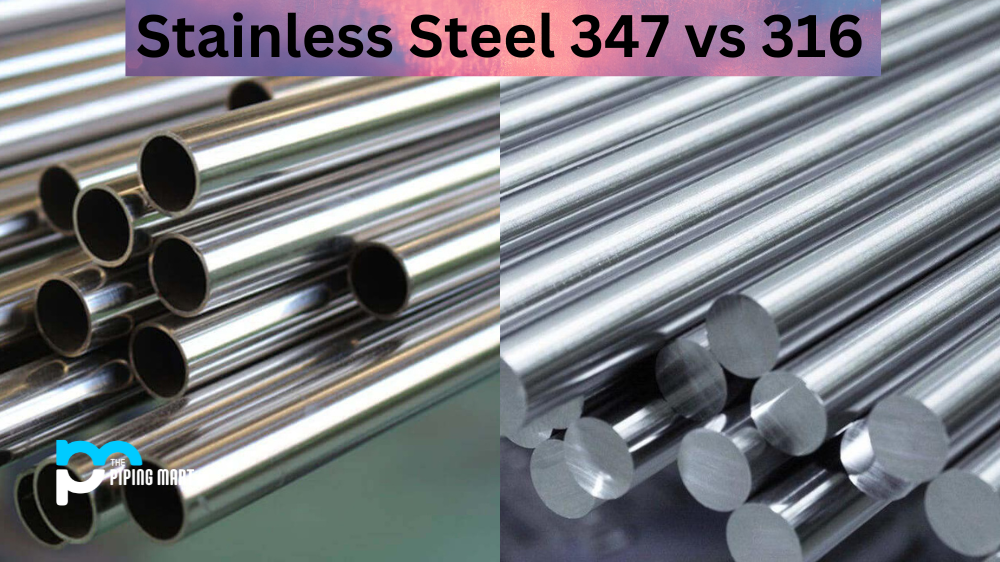Stainless steel is widely used in various applications due to its high strength, corrosion resistance, and ability to withstand extreme temperatures. Two of the most popular types of stainless steel are 316 and 347. Understanding the difference between these two alloys can be the key to selecting the type of stainless steel that best suits your needs. This blog post will explore the properties of stainless steel 347 vs 316.
What is Stainless Steel 347?
Stainless steel 347 is a corrosion-resistant, heat-resistant austenitic alloy. It has excellent resistance to oxidation and creep strength at high temperatures, making it an excellent choice for many applications where extreme working conditions are the norm.
What is Stainless Steel 316?
Stainless steel 316 is an alloy of iron, chromium, nickel, manganese and molybdenum with superior corrosion resistance. It offers excellent strength and durability compared to other forms of stainless steel. Its composition allows it to be used in marine environments where other metals would quickly corrode or become rusted!
Difference Between Stainless Steel 347 and 316
Composition
One of the most significant differences between stainless steel 347 and 316 is their chemical composition. While both alloys contain high percentages of chromium and nickel, the 347 variant includes adding a small amount of columbium or tantalum, making it more corrosion-resistant in high-temperature environments. In contrast, the 316 variant is more versatile and can be used in a wider range of applications thanks to its well-rounded chemical composition.
Heat Resistance
Due to the columbium or tantalum additives, stainless steel 347 is better suited for high-temperature applications than 316. This makes 347 a better choice for exhaust systems, boilers, and other high-temperature applications. However, if you are looking for an alloy with moderate temperature resistance, 316 is the preferred choice.
Corrosion Resistance
Stainless steel 347 has superior corrosion resistance to 316 because of its columbium or tantalum addition. It is particularly useful in applications where frequent thermal cycling can occur. With its better corrosion resistance, stainless steel 347 can withstand harsh environments like marine and chemical applications which can cause 316 to corrode and rust quickly.
Weldability
While 347 is more heat-resistant and corrosion-resistant, it is more challenging to weld than 316. 316 can be easily welded with most common welding processes, but 347 welding requires specialized equipment and techniques for effective welding.
Cost
When comparing the cost of stainless steel 347 vs 316, 316 is the more affordable option. This is primarily because 316 is a more versatile and commonly used stainless steel variant. 347 is a more specialized alloy, which makes it more expensive.
Conclusion
Choosing the right type of stainless steel for your specific application requires careful consideration of its properties and intended use. While both stainless steel 316 and 347 are excellent alloys, it helps to understand their differences. If you need an alloy with moderate temperature resistance, high corrosion resistance to harsh environments, or easier weldability, 316 may be the better choice. On the other hand, 347 is best suited for extremely high-temperature applications, particularly where frequent thermal cycling may occur. Both alloys are vital in stainless steel; their characteristics can help you decide what to use.
Meet Heer, a dynamic and driven writer learning tricks of her trade in the metal industry. With a background in Digital Marketing, Heer brings a unique perspective to her writing, sharing valuable insights. Apart from blogging she like reading and hiking.




